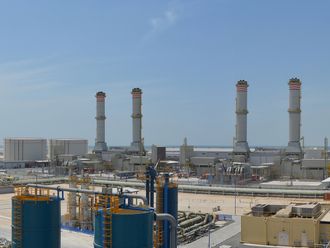One thing is sure about today’s oil market - producers are satisfied with the level of prices and the consumers are equally satisfied that they are not shooting higher. Prices are very much influenced by economic ups and downs.
This of course is fundamentally correct as economic growth is always coupled with a corresponding gain in energy demand. The reverse is also true.
But economic indicators can change abruptly and before we understand the impact of one indicator we find it changing again. How many times were we assured of economic recovery only to be told a few days later that it is weak or slow in coming?
The oil market as indicated by price cannot escape the impact of economic news. The market moves even before the news can be authenticated. There is no easy solution and we hope that the media’s reporting of economic news is more accurate and less confusing.
The price of the Opec (Organisation of Petroleum Exporting Countries) basket of crude oils towards the end of June was close to $98 a barrel. Notwithstanding the volatility and ups and down, price movement has been generally upward. The price was $107.58 on August 22 and the month’s average is likely to be close to $106.4 a barrel or two dollars over the July average. But this is still well below the February average of $112.75. The 2013 average so far is $105.13, which is over four dollars a barrel below that of 2012.
In spite of the decline in demand in the industrial countries and the rise of crude oil production outside Opec, especially in the US and Canada, prices have maintained a comfortable level because of the still rising demand in developing countries, the relative stability of Opec production and the impact of political turmoil in some of the producing countries or close to them.
Decline in production of Libya due to a strike in the loading terminals and in Iraq due to repeated bombing of its northern pipeline to Turkey kept the market guessing as to the duration of the strike or when the pipeline will be repaired.
It is to be remembered that we are now in the middle of the third quarter where oil demand rises due to the driving season and stock building in preparation for winter. Both give support to oil prices. But in the last few weeks there has been a modest decline in the stocks of the industrial countries, especially those of crude oil indicating demand may be higher than estimates.
Forecasts for next year suggest that demand growth could be just over 1.2-mbd (million barrels a day) above the level of this year’s 90-mbd. But due to rising supplies from non-Opec producers, demand for Opec output may be similar or slightly less than this year’s. Opec itself estimates the call on its oil to be 29.9-mbd in 2013 and 29.7-mbd in 2014.
In fact the IEA (International Energy Agency) in its latest Oil Market Report suggests that requirements from Opec in 2014 could be as low as 29.4-mbd.
If the Federal Reserve scales back the stimulus programme of bond buying of $85 billion a month, then oil prices are likely to suffer. But opinion within the Fed is divided as to when to scale back.
The US Energy Information Administration (EIA) projects WTI (West Texas Intermediate) prices will soon fall below $100, and average approximately $98 for the rest of the year. This remains to be seen. In contrast Goldman Sachs’ projection suggests Brent oil prices could increase to $115 per barrel if the disruption in Libya is not resolved and Iraq does not recover its northern exports due to repeated damage to the pipeline.
The news that Iraq may reduce its southern exports by 0.5-mbd because of maintenance and modification has been denied by the Ministry of Oil. The turmoil in Egypt and its impact on the Suez Canal and the SUMED (Suez-Mediterranean) pipeline is another reason behind the Goldman Sachs projection.
The Norwegian government in its budget deliberations is forecasting prices to be around $98 a barrel in 2014 and may be closer to $90 a barrel in 2015. Jens Stoltenberg, the Prime Minister, said: “We must be prepared for more falls (in oil prices).”
However, this may be a prudent approach to the budget rather than a reasoned forecast. Among such vagaries who can tell where prices are heading?
The writer is former head of the Energy Studies Department at the Opec Secretariat in Vienna.












